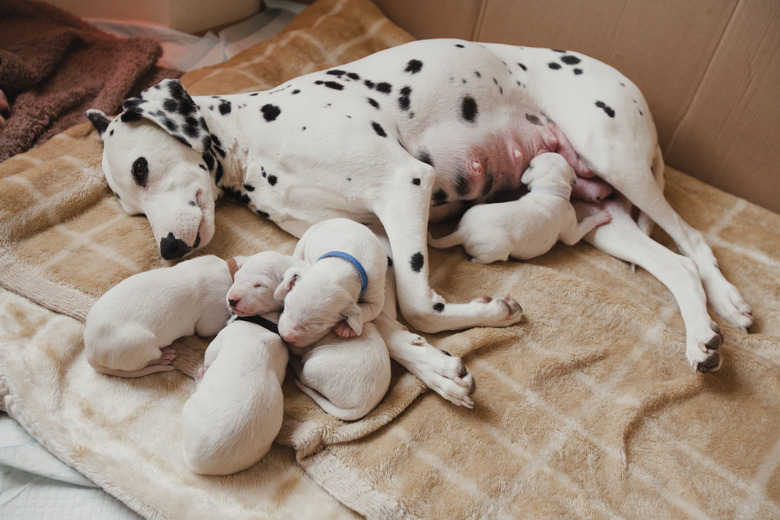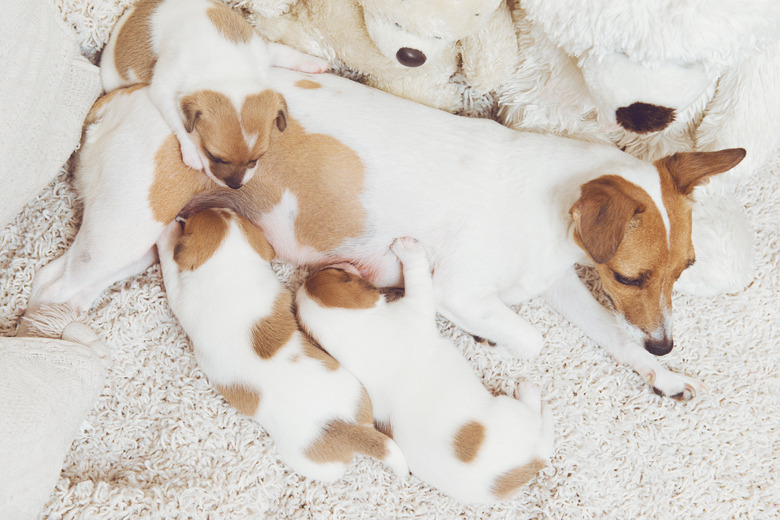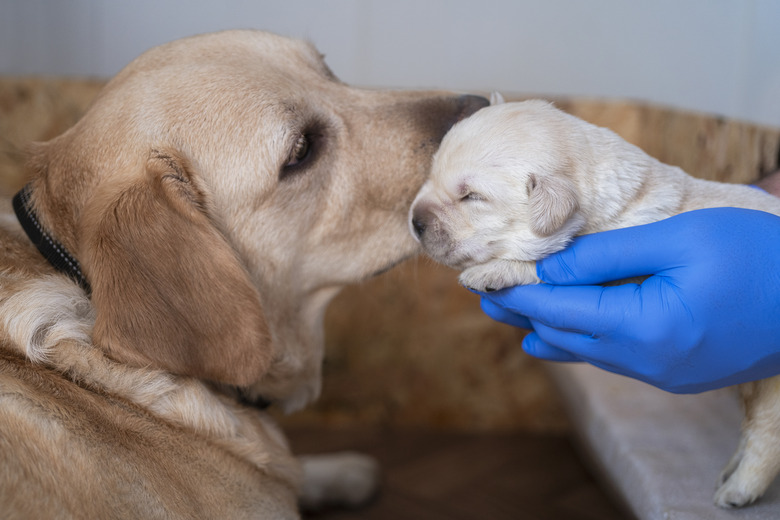Signs That My Dog Is Going To Give Birth
Pet owners who have bred their dog for the first time are often surprised by how anxious and excited they feel as their pup's due date approaches. Welcoming new life into the world is always exciting, but it's a bit scary too. If you're feeling anxious about your dog's labor, take a deep breath and remember that Mother Nature knows what she's doing. Most dogs deliver their puppies just fine without any help from their humans. It's a good idea to know the signs of dog labor and have your vet on standby just in case, but the odds are good that moral support and some extra love are all your dog will need from you.
Signs a dog is about to give birth
Signs a dog is about to give birth
Although it varies a bit by breed, a dog's pregnancy will last about 63 or 64 days. If you've bred your dog on purpose, you can calculate her approximate due date so you know when to watch her. If your dog's pregnancy came as a surprise, your vet can check how far along your girl is and give you a due date estimate.
About a week before your dog's due date, start taking her temperature twice a day with a rectal thermometer. To do so, wipe the thermometer clean with alcohol, coat the tip in petroleum jelly, and insert the thermometer into your dog just far enough that you can no longer see the silver tip on the thermometer. Your dog's temperature will read somewhere between 101 and 102.5 degrees Fahrenheit. When their temperature drops slightly below 100 degrees, expect her labor to begin in the next 12 to 24 hours.
Around this same time, your dog may seem restless and uncomfortable, and she probably is. Although they don't complain, labor in dogs is as painful and uncomfortable as it is for humans. A dog getting ready to give birth may pace, shiver, whine, and pant. She may also become irritable or start nesting. Labor is easier on an empty stomach, so your dog may vomit up her last meal or refuse to eat as her labor begins and her contractions start.
Helping your dog during the birthing process
Helping your dog during the birthing process
A drop in your dog's temperature, change in her appetite, and restless behavior all indicate that your girl is in the first stages of dog labor. During that time her cervix will dilate, and she will get ready for active labor. When active labor begins, you will notice your dog visibly straining and pushing. She will either lie down or squat during this time. Once your dog begins pushing, it can take her up to 30 minutes to deliver her first puppy.
Once the puppy is born, your dog will begin to lick the puppy to stimulate his breathing and remove any amniotic fluid. The new mom will do a thorough job of cleaning and stimulating each puppy if she has adequate time between them. If the puppies come close together, however, you may need to help her by rubbing one puppy briskly with a towel to stimulate him while your dog delivers the next puppy.
If the puppies do come slowly, don't worry. It's common to experience a 30-minute gap between puppies. Some mother dogs even take a break during their labor for up to three hours at a time. If your dog hasn't produced a puppy for more than three hours but you believe there are more puppies inside her, it's time to go to the vet for some help. You should also visit the vet if your dog actively pushes or strains for an hour without producing a puppy.
What to do for your dog after she gives birth
What to do for your dog after she gives birth
After expelling all of her puppies, your dog will have a few final uterine contractions to remove any remaining placenta, blood, or fluids. This signifies the end of the birthing process. Clean up any soiled towels or sheets and dispose of them, leaving only clean bedding for your dog and her pups. The birthing process is beautiful but messy, so simply throw away soiled linens rather than trying to save them.
Once you've cleaned up, take your dog outside to use the toilet and then offer her food and water. After her meal, tuck your dog in with her puppies and give the new family some space. Call your vet the next day to schedule a checkup for the new family and make sure all is well.


